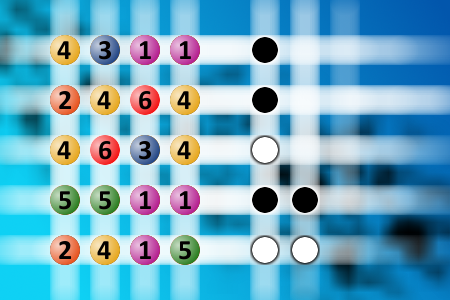Which is a winning combination of digits?
The computer chose a secret code (sequence of 4 digits from 1 to 6). Your goal is to find that code. Black circles indicate the number of hits on the right spot. White circles indicate the number of hits on the wrong spot.Correct answers: 22
The first user who solved this task is Nasrin 24 T.
#brainteasers #mastermind

A wife was making a breakfast ...
A wife was making a breakfast of fried eggs for her husband.
Suddenly, her husband burst into the ki tchen.
"Careful," he said, "CAREFUL! Put in some more butter! Oh my GOD!
You're cooking too many at once. TOO MANY! Turn them! TURN THEM NOW! We need more butter. Oh my GOD! WHERE are we going to get MORE BUTTER? They're going to STICK! Careful . CAREFUL! I said be CAREFUL! You NEVER listen to me when you're cooking! Never! Turn them! Hurry up! Are you CRAZY? Have you LOST your mind? Don't forget to salt them. You know you always forget to salt them.
Use the salt. USE THE SALT! THE SALT!"
The wife stared at him. "What in the world is wrong with you? You think I don't know how to fry a couple of eggs?"
The husband calmly replied, "I just wanted to show you what it feels like when I'm driving."
Suddenly, her husband burst into the ki tchen.
"Careful," he said, "CAREFUL! Put in some more butter! Oh my GOD!
You're cooking too many at once. TOO MANY! Turn them! TURN THEM NOW! We need more butter. Oh my GOD! WHERE are we going to get MORE BUTTER? They're going to STICK! Careful . CAREFUL! I said be CAREFUL! You NEVER listen to me when you're cooking! Never! Turn them! Hurry up! Are you CRAZY? Have you LOST your mind? Don't forget to salt them. You know you always forget to salt them.
Use the salt. USE THE SALT! THE SALT!"
The wife stared at him. "What in the world is wrong with you? You think I don't know how to fry a couple of eggs?"
The husband calmly replied, "I just wanted to show you what it feels like when I'm driving."

